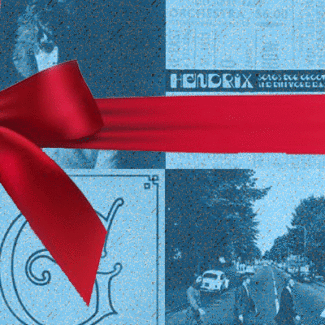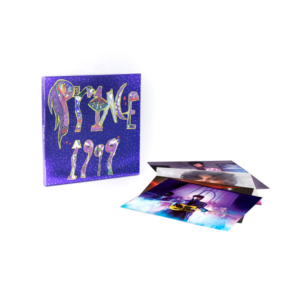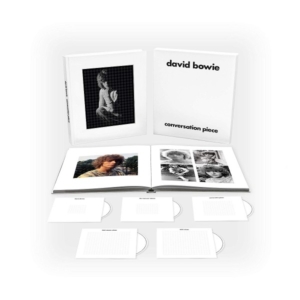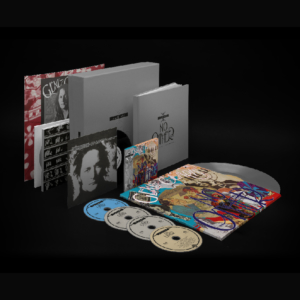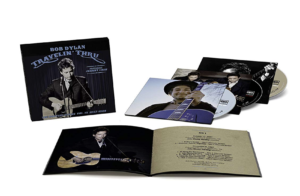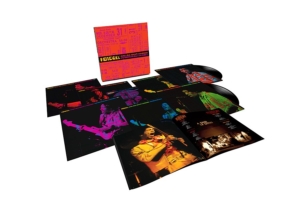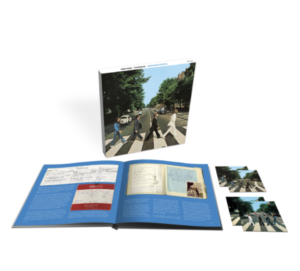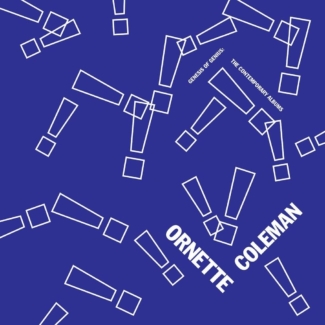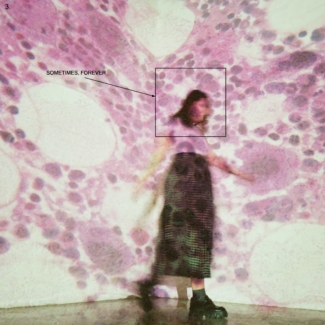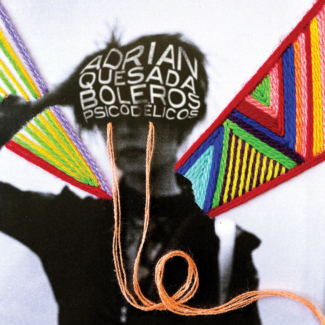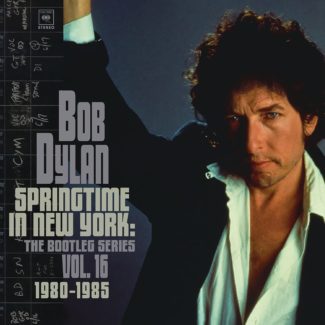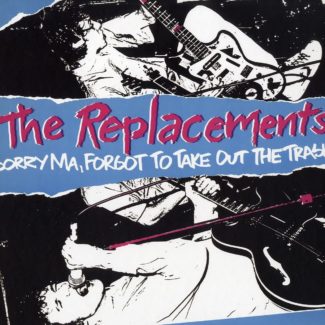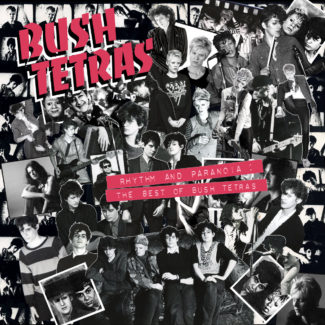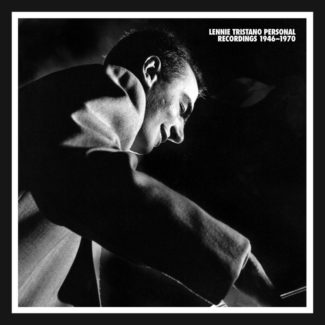KUTX Music Editor Jeff McCord’s take on the box sets to buy this holiday season. Albums are rated on a five-point scale.
It’s box set time in the record industry, a holiday trend that happily continues despite fewer people actually buying physical music. For streamers, dig into all these collections if you can find them, but know that you’re missing out. While box sets can run the gamut from hastily slapped together reissues to carefully curated retrospectives, the best of these (including the sets reviewed here) come with lots of extras. Some are available in multiple configurations, some are on or include vinyl, there’s 5.1 surround mixes, DVDs, essays and rare photographs put together in coffee table-like books. When done right, they’re a fan’s paradise. These days more and more box sets are focusing on more targeted eras. Many are based around a single album, placing it in historical context with a ton of previously unreleased material. Since these collections are rarely assembled for new artists, these legacy artists included in this year’s selections are, like the record business of old, overwhelmingly male. Still, it’s hard to go wrong with any of these collections. Pick a winner for the music lover in your life – even if that happens to be you.
– Jeff McCord
Prince – 1999 (NPG/Warner Brothers)
Oberheim synths. Linn drum machines. Industrial new wave dance beats. A Reagan-era cold war doomsday vibe. You’d think Prince’s fifth album, released in October of 1982, would forever remain a prisoner of its time. Even with a top ten R&B hit and critical admiration for his scandalous Dirty Mind and Controversy releases, in 1982, Prince was hardly a mainstream star. Months off the road from his Controversy tour, he was assembling enough material for a double album – and as it turns out, much more than that. Putting in 19 hour days, playing virtually every part himself, he worked away with only the help of engineer Peggy McCreary, who eventually taught Prince to punch in his own vocal parts so she could get some rest. From the beginning of his career, Prince’s work ethic put almost everyone else to shame. Releasing an album a year since his 1978 debut, he had also recently crafted albums for groups he conceived, the Time and Vanity 6. Yet in a matter of months, Prince would record not only the seventy minutes of 1999 everyone has come to know, but over two hours of ‘vault’ material left off the record. These are not outtakes, virtually any one of these tracks could have taken the place of one on the finished album. Some he sabotaged lyrically (never his strong suit). “Irresistible B***h” and “Vagina” are insanely funky but you can see why they didn’t make the final cut. Some of the vault tracks have been previously released but heard here in total, the effect is astonishing. There’s not a single throwaway. In addition to the remastered original album and the vault material, the 5 CD, 1DVD or 10-LP box is rounded out with a superfluous selection of alternate takes and single edits (none of which top the originals), electric live concert selections from November ‘82, and a full concert DVD from Houston shot in late December. (My first Prince show would be two days later, New Year’s Eve in Dallas). Watching his boundless energy as a performer, you always have the same thought. Where did this guy come from? Prince was obviously a product of his time, he loved the new wave sounds of people like Devo and Gary Numan. He utilized the newest instruments of the time, many of which have become horribly dated. So what makes 1999 still bracingly modern? Prince was also a serious student of James Brown, Sly Stone, Funkadelic, which combined his modernity with his irrepressible funk. It permeated all his work. His choice of instruments didn’t define his music. He did. (Just listen to the recently released acoustic guitar demo of “I Feel For You” if you want more proof.) 1999 is the album that, thanks to MTV and “Little Red Corvette”, made him a star. And his work would continue to thrill us for decades. This collection reinforces what we already knew – Prince was one of the most inspired and creative musicians of our lifetime, and we’re all lucky we got to share some of it with him.
4.75
Buy 1999 here.
David Bowie – Conversation Piece (Parlophone)
Though not an inclusive collection of David Bowie’s early years, this multi-disc collection finds plenty of highlights. But like all of Bowie’s Parlophone sets, what’s here (and what’s not) seem almost random. If just a collection of early demos, why not also include those from pre-1967? If a statement on his formative years, where are his early singles, the single from his group Feathers, or his debut album on Deram for that matter? I expect the answer lies somewhere in licensing hell, but if fans are going to put down their cash, a bit more digging might have been worth it. That’s not to say what’s included isn’t fascinating. There are fascinating but poorly annotated home demos (Archiving apparently wasn’t Bowie’ strong suit. The notes have lots of guesses when and where these tracks were recorded), all from the late sixties post-Deram period. You hear the inspired origins of some songs destined for his 1969 RCA debut, David Bowie (retitled Space Oddity after the single took off), home recordings along with duos with former singing partner John Hutchinson, the agile Mercury demos and a 1968 full band BBC session. Though hardly embryonic – Bowie was already several years into what was at the time an unsuccessful career – you can still hear him morphing his slightly twee voice to the full-throated melodrama that would soon cement his stardom. Following his keen instincts at this crucial time makes what came later easy to understand. These sessions take up three of the set’s five discs. After that comes not one, but two versions of Space Oddity. Why? Most any Bowie fan digging for early obscurities already has Oddity in their collection, and the Tony Visconti remix on the final disc, while nice to hear, is available on its own. Parlophone has also issued the Mercury demos separately. In fact, though some are on obscure collections, only 12 of the set’s 75 selections are previously unreleased. What really makes the set worthwhile is a stunning 120-page book made of notes, correspondence, artwork and photographs from early manager Ken Pitt’s collection, that could easily be sold in bookstores. So overall a bit of a mixed bag, but for Bowie enthusiasts who haven’t already heard a lot of this material, you shouldn’t hesitate to dive in.
3.75
Buy Conversation Piece here.
Gene Clark – No Other (4AD)
The “Heaven’s Gate” of the music industry? To be fair, No Other didn’t crater a label. Yet David Geffen, who’s Asylum label financed and released it, undoubtedly feels a twinge in his wallet each time Gene Clark’s 1974 masterpiece gets mentioned. For its time, the album cost a small fortune – over 100k. Geffen, unhappy when presented with an eight-song album with no singles, refused to pay to promote it. Clark, in turn, refused to tour. The record didn’t sell, was soon deleted, and that was that. And yet. And yet. Clark and his producer Thomas Jefferson Kaye poured every drop of their creative juice into the album. Far from being frittered away on cocaine, this is a textbook example of artistic obsession. Lush and wondrous, LA’s finest musicians frame perfect arrangements. Steel guitars glide, choirs swell, while Clark’s crystalline voice soars above it all. Even for the guy [the guy not named Bob Dylan, that is] who penned most of the Byrds early hits, Clark seems to be working on a different plane. “When the stream of changing days / Turns in so many ways,” he sings in the title track, “Then the pilot of the mind / Must find the right direction.” In every respect, No Other veered away from Clark’s previous folksy solo albums. The reason Clark ended up with a big check from Geffen dates to a failed 1972 Byrds reunion. Roger McGuinn described the sessions as more of a party, and Geffen seemed impressed that Clark was the only one who showed up ready to work. Clark was no angel – his drug dependency would later worsen and he would only live to age 46. Yet by most accounts, the No Other sessions came at a time of relative sobriety. Over the years, as fans found their way to No Other, its reputation grew. But Clark wouldn’t live to see it. Geffen didn’t even bother to release the album on CD until after Clark’s death. A 2003 reissue would feature some alternate takes. But now, in an age where the album is widely regarded as a classic, when members of Beach House, Grizzly Bear and Fleet Foxes have united to perform it, the adventurous UK indie 4AD has released a remastered No Other in multiple configurations, including a deluxe SACD/5.1/DVD/LP box with 17 previously unheard alternate takes, a documentary film and an 80-page book. Not bad for an eight-song album. Clark made a lot of good music in his lifetime, yet this was a reach for the stars. No Other remains his artistic peak. “We all have soul,” he sings in “Some Misunderstanding”. “Yet nobody knows / Just how much it takes / To fly.”
4.75
Buy No Other here.
Bob Dylan (feat. Johnny Cash) – Travelin’ Thru, 1967-1969: The Bootleg Series Vol. 15 (Columbia Legacy)
Chronicling Dylan’s late sixties Nashville trifecta of John Wesley Harding, Nashville Skyline and Self Portrait, the latest edition of the Bootleg Series rounds up outtakes from these sessions. There aren’t many. So the bulk of Travelin’ is taken up with the loose, affable and oft-bootlegged Dylan and Johnny Cash duets, most of which were recorded at the tail end of the Nashville sessions. Despite the pitchy harmonies and numerous false starts, the pair are clearly enjoying each other’s company, and it’s a delight to be a fly on the wall. For whatever reason, Dylan seems to take to Cash’s material better than vice versa, so Cash’s songs dominate. They do take on Dylan’s “Wanted Man”, a song Dylan wrote for Cash. It’s great to hear Dylan singing the song, but they never quite get around to finishing it. The pair are most at ease when they cover others- Crudup’s “That’s All Right”, a medley of “Mystery Train” and “This Train Is Bound For Glory”, “Matchbox” (featuring its writer Carl Perkins on guitar), “Just A Closer Walk With Thee”, and a spirited Jimmie Rodgers tribute. In contrast, the pair are rehearsed and in top form for the Johnny Cash TV Show taping recorded months later, and Dylan takes the same band in the studio for a couple of more recordings, ostensibly for Self Portrait (they didn’t make it, just as well for a Dylan album best left forgotten). The collection wraps with the only non-Nashville recordings, a quartet of songs from Carmel, New York recorded with Earl Scruggs and his band. They’re fun but mostly a curiosity. (If you ever wanted to hear Dylan singing Bluegrass, here’s your chance.) With the exception of an unheard tune, “Western Road”, the 15 Harding and Skyline tracks are all alternate takes that don’t differ that much from the known versions. The scarcity of outtakes is due to a couple of things. Dylan seriously prepped for Harding, the sessions wrapped in close to nine hours; there wasn’t much experimenting. And Columbia notoriously lost a lot of Skyline outtakes when it forgot to pay a bill on a storage facility, buying them back – at least some of them – decades later on eBay. Clocking in at three CDs/LPs, the collection is much shorter than the weighty volumes of recent years. (The endless live gospel and Rolling Thunder collections were enough to make you long for the shorter and more curated Bootleg Series of old.) Not surprising for what was a transitory era for Dylan, there’s nothing that essential here, but the duets with Cash are a delight, if only for the way they bring these near-mythological figures down to earth for a while.
3.75
Buy Travelin’ Thru here.
The Go-Betweens – G Stands For Go-Betweens Volume 2 1985-1989 (Domino)
Australia’s Go-Betweens never seemed to fit in. Helmed by two bookish songwriters, Robert Forster and Grant McLennan, the pair seemed to finish each other’s sentences as their crafted idiosyncratic folk-rock overlapped an era of punks, synths and drum machines. Despite an 18-year career encompassing nine albums, multiple singles and compilations on over a half-dozen worldwide indie and major labels, they never came close to a top ten hit, even in their hometown of Brisbane. But their fanbase was rabid. They wrote weird, awkwardly phrased songs that buried their subtle hooks like a splinter in your finger. They couldn’t get arrested on some tours, yet since disbanding, their legend has blossomed. In 2010, Brisbane named a bridge in their honor. The Go-Betweens were a band from 1977-1989, until McLennan walked away, frustrated at their lack of success. Both songwriters pursued solo careers, reunited with a new lineup in 2000 and played up until McLennan’s sudden death in 2006. G Stands For Go-Betweens, Volume 2, is the second over-arching career collection (the first was released in 2015). Covering their middle years, this hybrid 5-LP, 5-CD set contains their three albums from this period, Liberty Belle and the Black Diamond Express, Tallulah and 16 Lovers Lane along with an unreleased double live album from 1987, all on vinyl. There’s also an astonishing five CDs full of unreleased material. As might be expected, some selections are better than others, but the best of this material is revelatory. (And there is a lot, including a KCRW live session and two CDs of 1989 demos of songs planned for a future album scrapped after their breakup.) Though 1983’s Before Hollywood and 1984’s Spring Hill Fair are absolute triumphs, in many ways the late eighties was the band’s peak. With angular classics like “Cattle And Cane”, “Part Company” and “Draining The Pool For You” already behind them, each new album found the band building writing confidence and refining their sound. Their more polished production would prove to be a double-edged sword, alienating, at least initially, some fans of their indie coarseness while doing little to up their visibility. But there was no denying the songs. McLennan, in a relationship with new Go-Between Amanda Brown, seemed to be bringing a sunnier tone to songs like “Right Here” and “Streets Of Your Town”. Laden with woodwinds and strings, they are as close to traditional pop as the band ever ventured. Elsewhere, heart on the sleeve songs like “Apology Accepted”, the driving “Head Full Of Steam” and a barbed “The House That Jack Kerouac Built” fit in more with their earlier sound. Fountains of Youth, the previously unreleased 1978 live album, seems to capture the band at exactly the right time. The recording, setlist, and performance are all first-rate. Even if you already own the studio albums on this set, the live recordings, and the 1989 demos alone are essential listening. In a time where the band is more widely known, it’s hard to remember how frustrating it must have been for them to be producing such unique and urgent work for so few ears. Equally brilliant and prolific, the Go-Betweens were a band apart. The evidence is right here, on one of those rare collections that will please uber-fans and the uninitiated alike.
5
Buy G Stands For Go-Betweens here.
Jimi Hendrix – Songs for Groovy Children: The Fillmore East Concerts (Experience Hendrix/Legacy)
By 1969, Jimi Hendrix was America’s most successful rock star, but his band the Experience and their 1968 masterpiece, Electric Ladyland were both in the rear-view mirror. So was his triumph at Woodstock, where he had debuted his new expanded band Gypsy Sun and Rainbows, featuring his army buddy Billy Cox and Electric Flag drummer Buddy Miles. By year’s end, Hendrix was holed up writing new material. Much of it was visceral, longer and open-ended. He owed Capitol another album and decided that a live album was the way to get him off the hook. So he booked his band [now down to the black power trio Band Of Gypsys] for four shows over New Year’s at the Fillmore East. The resultant live album, 1970’s Band of Gypsys, was all selected and edited from the New Year’s Day sets. Though numerous other selections have surfaced from these shows, Groovy Children captures every note of the four concerts as they happened, with nearly two dozen previously unreleased performances. Most multi-concert sets can end up being a bore, with little deviation from show to show. Not here. You can almost chart the tempestuous guitarist’s moods over the four sets, all of which differ in structure. While plenty of repeated material, each show feels wiry and unpredictable. Hendrix improvises with a jazz musician’s fluidity, he rarely travels the same path. Hendrix always towered over his sidemen, and here, Buddy Miles’ songs, though Hendrix does his best to inject some creativity, pale in comparison. For his opening set, Hendrix tested his audience, performing nothing he had previously recorded. A few reworked faves start creeping back in – a speed-driven “Fire”, a slowed “Foxey Lady”, a trio of hits closing out the final set. But mostly it’s all about the new, the long rhythm and blues riffs, a few more complete like “Power of Soul”, and some unrecorded Experience leftovers – “Message to Love”, “Stepping Stone”, and the harrowing Vietnam-based epic “Machine Gun”. Getting three more versions of this alone is reason to delve into Groovy Children. The sound is remarkably good for a live recording from this period, and if the new band occasionally shows their nervousness, Hendrix’s intensity is white-hot. He might not have thought so. At the end of the first set, he thanks everyone for coming and offers up an apologia of sorts: “We’ll get it all together and come back and really do it, alright? One of these days.” One of these days would never come – Gypsys would perform only one more ill-fated show, and Hendrix himself would be dead by September. But Groovy puts us back in a time where anything seemed possible.
4
Buy Songs for Groovy Children here.
The Beatles – Abbey Road (Apple/Capitol/UMe)
It’s heresy in some circles, but Abbey Road was never one of the best Beatle albums. I was less than thrilled when hearing it would be next to get the 50th-anniversary box set treatment. (Will we really have to wait for the 60th anniversary to get deep dives into Rubber Soul and Revolver?). What turned out to be their final album always had a one foot out the door feel in terms of material. Do we really need alternate takes of “Maxwell’s Silver Hammer”, “Octopus’s Garden”, “Oh! Darling” or Polythene Pam”? While the extended thunder of “I Want You (She’s So Heavy)” is a rush, it’s not exactly “Strawberry Fields” or Norweigan Wood”. True, the Beatles had set their own songwriting bar very high. And Abbey Road is not without its peaks. George Harrison, sensing his opportunity, shines here like on no other Beatle album, with two of his strongest contributions, “Something” and “Here Comes The Sun”. “Because” is a Lennon gem, as is his Chuck Berry inspired slow-groove, “Come Together”. McCartney’s at his best with his songs (sometimes fragments) in the long medley he conceived, including “She Came In Through The Bathroom Window”, two tracks complaining about their legal mess at Apple, “You Never Give Me Your Money” and “Carry That Weight”, and the thrilling (and largely instrumental) finale, “The End”. Expertly produced, the album sounds spectacular. But held up against other Beatle classics, there’s less cohesion, more weak spots. Lennon, sidelined after a car crash, doesn’t even appear on numerous tracks. Not surprisingly, this carries over to the three discs of demos and alternate takes contained here as well, which seem somewhat thin following all the revelations from the “White Album” sessions. There are some great moments. On the demos, both McCartney and Lennon’s vocals seem strained and appealingly raw. The two play a charismatic bare-bones duet on “The Ballad Of John and Yoko”. There’s a whacked-out alternate version of “I Want You”. And it’s fun hearing them assemble and navigate the tricky changes of the medley. Largely sidelined for the Let It Be sessions, George Martin, famously told not to try “all his producing” on the “White Album”, was coaxed back for Abbey Road in order to do just that. His work here is sublime. The final two session tracks are his synchronous orchestrations, which make a strong case as any for his vital contribution to this group. George’s son Giles again remixes the original album, more faithfully than his (sometimes criticized) work on Pepper and the “White Album”, preserving the album’s warm analog bite. And the massive accompanying booklet is painstakingly assembled, full of rare photographs and track by track commentary. Though no one said anything out loud, the end was near when this extraordinary group gathered one more time, frayed nerves and all, to make another record. That it came out as well as it did is no surprise. Even at less than their best, the Beatles towered above their peers.
4.25
Buy Abbey Road here.
Hank Williams – Pictures From Life’s Other Side (BMG)
In 1951, WSM, the clear channel Nashville station that brought the Grand Ole Opry show into living rooms across the country, invited one of the show’s stars, Hank Williams, to host a weekday fifteen-minute early morning program, sponsored by Mother’s Best Flour Company. Flour company sponsorships had already been vital to the careers of Milton Brown and Bob Wills among others, and King Biscuit Flour was to beaming deep blues across the south. The Opry itself is, to this day, sponsored by Martha White Flour. Mother’s Best had a simple format: Williams would generally feature a guest and play a couple of songs himself, one of them usually a sacred selection. Since the program came at the height of Williams’ fame, his numerous road commitments forced him to pre-record a lot of these programs. Fortunately, these programs were recorded straight to acetates, instead of audiotape that would surely have been reused. Still, they were largely forgotten until decades later, rescued by a keen-eyed engineer just before being tossed into the trash. Radio transcriptions, those few that have survived, can be a tough listen. Sound quality is often poor, some of it home recordings, or third or fourth generation copies. Announcers prattle on, sponsors sell, often right over the musical performances. But the Mother’s Best shows were preserved, resulting in first or second-generation copies, all remastered here. This material has been released before, at least some of it, with announcers, guests and advertising intact. Here, producer Cheryl Pawleski wisely trims it to just Williams’ performances and select bits of his studio chatter. The result is a wealth of professionally recorded tunes spread over six CDs, significantly adding to Williams’ 250 some odd MGM studio recordings. On the radio, Williams seems at ease, his asides providing a furtive glimpse of his personality. He seems to relish playing what he wants, his classic songs as well as forgotten gems, and great interpretations of others instead of just the small group of self publishing experts dictated to him by MGM. For a man who drank himself to his grave by age 29, Williams has a reputation (deserved, especially towards the end) as a no-show drunk, but what we hear on these recordings is a consummate professional knocking out one great live take after another. Amazingly, these sessions were often recorded after the second 11 pm Saturday Opry show, so Williams and band could roll out on the endless highway. The collection also features a hardbound 272-page book of rare photographs and brief but contextual notes by Williams historian Colin Escott. Despite never drifting from his country roots, Williams stands as one of the most prolific and gifted American songwriters of any genre. These 1951 recordings reinforce the tragedy of a career cut way too short.
4.25
Buy Pictures From Life’s Other Side here.
The Replacements – Dead Man’s Pop (Rhino)
On the surface, this seems like an oddity – a 4-CD, 1 LP box set based around the band’s most contentious album, 1989’s Don’t Tell A Soul. The slick, effects-laden final mix made Soul an outlier in band’s catalog – both band and critics hated it. But it was also their best-selling album, and not without its fans. By giving producer Matt Wallace a chance to mix the album that was initially taken away from him thirty years ago, this is an attempt to rewrite history.
The Replacements were always a band that couldn’t get out of their own way. Drunken anarchy followed them wherever they went. Yet Paul Westerberg’s don’t- give-a-fuck attitude hid a songwriter that clearly did. The same could be said for the band. The Replacements had been around for ten years at this point, Westerberg was nearing thirty. Their previous two major-label albums, Tim and Pleased To Meet Me, had done well enough to earn them a contract extension. But peers like R.E.M. were quickly outpacing them, and everyone, including the band, was hoping for more this time out. There was pressure on all fronts.
Yet the long Pleased tour had left the band spent – in part due to their antics – and the songs Westerberg found himself writing in the tour’s wake were darker and more reflective. They were also some of the best of his career. Dead Man’s Pop was the project’s working title, born from Westerberg’s fear that his ragged melodic rock was no longer in vogue. On top of that, they couldn’t find a producer. Champion bridge-burning had left them with a shortlist. They’d already bailed on an aborted, expensive session at New York’s Bearsville with producer Tony Berg. They finally settled on Matt Wallace, a young, unproven producer (he would later click with Faith No More). Somehow, he hung in the ‘Mats typhoon long enough for things to click, and eventually, they got the album done. But having no real track record, the label gave the mixing duties over to Chris Lord-Algae, who specialized, in his own words, at ‘songs on steroids’. It was an ill fit.
It’s hard to undo thirty years of aural muscle memory, and stripped of cannon-shot drums, cheesy guitar effects and sped-up tempos, Wallace’s mix at first sounds modest. The songs and performances are still the same, after all. But he’s accomplished something crucial – he’s slipped right back into Westerberg’s mindset decades ago. It finally sounds like a Replacements album, and with songs like “Darlin’ One”, “Achin’ To Be”, “I’ll Be You”, and “They’re Blind” in the mix, one of their better ones.
The second disc is the most dispensable: all outtakes, including the classic apologia “Portland”, the Bearsville sessions (interesting but missing any real spark) and a newly discovered drunken late-night session with mutual admirer Tom Waits (fun to hear – once, anyway).
Better yet are discs three and four, an entire concert, titled Inconcerated Live, from the 1989 Soul tour recorded in Madison WI. Only five of these songs have been previously released. Live albums from the Replacements are few and far between (one of the first, 1985’s cassette-only Shit Hits The Fans, was recorded here at Liberty Lunch and released by Austin’s Roscoe Shoemaker. The excellent 1986 set from Hoboken, For Sale, wasn’t released until 2017). Listening to the songs from the box set on shuffle play, the electricity of these live tracks stuns you when they pop on. You think: What happened to THIS band? With the possible exception of Let It Be, they never found this power in the studio. One classic after another mixes in with Slade, Johnny Thunders and Only Ones covers, in exhilarating fashion. They knew the tape was rolling in Madison, so they at least tried to, you know, actually finish most of the songs. Still, it’s far from perfect. The ‘Mats were never about that. Chaos was a part of the package, and it stayed that way until the end. The Replacements would only have one more album left in them, All Shook Down, essentially a Westerberg solo project. Aside from a brief reunion a few years back, they were done. They may have never scaled the charts, but they were, for a time, one of this country’s greatest bands. And on that point alone, Dead Man’s Pop sets the record straight.
4.5
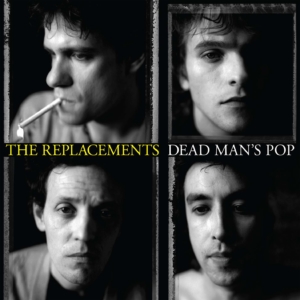
Buy Dead Man’s Pop here.
